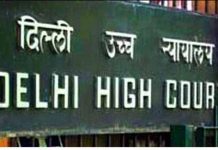
Karnataka that has seen four successive years of drought has also seen suicides by 3515 farmers between 2013 and 2017. Farmers in the state have been demanding waiver of all loans as they had lost all crops in the past four years. Even when crops were not lost, crash in prices led them into deeper debt. The crop loans alone stand at a whopping 53,000 crore and the sum total of all borrowings by farmers (for personal and family expenses) is well over double this amount.
Janata Dal (S) had promised waiver of loans during electioneering as did the Congress and the BJP too. In fact, last year, the then Chief Minister S Siddaramaiah waived crop loans of up to 50,000 borrowed by farmers from government run cooperative banks. But many farmers were left out as they took loans from the nationalised banks and the RRBs.
Naturally, now the farmers in Karnataka are seeking a full loan waiver from the new government of Kumaraswamy and apply same procedure for loans taken from all financial institutions. The Chief Minister is yet to implement his promise, though he said he was keen to waive off loans as he had promised.
Meanwhile, Kumaraswamy’s predecessor, the two-day Chief Minister BS Yeddyurappa, demanded the immediate loan waiver as promised by Kumaraswamy or else face action. The BJP did act — sponsored a state-wide bandh on May 28 that evoked tepid response in the state, barring in its strong holds.
But can Kumaraswamy afford to waive off loans and more important who will bear the burden? In the Congress led Punjab, as CM candidate Captain Amrinder Singh promised loan waivers during electioneering but found out that the Centre abandoned the state and refused to foot the bill for this subsidy.
Regardless, the BJP goes to town on loan waivers itself when it comes to campaigns for elections anywhere — like in Uttar Pradesh last year when the party swept the state and made Yogi Adityanath the Chief Minister. As CM he signed the loan waiver scheme with much fanfare, but the ground reality, the beneficiaries found was in sharp contrast – it turned into a poor joke with few farmers getting a loan waiver of few Rupees and even less.
There was this farmer in the state who got Paise 19 as loan waiver, that exemplifies loan waiver scheme of a government, this time of Uttar Pradesh government. Yogi and his ministers and a host of BJP spokespersons on television dodged the question but the farmer on the field knows, “even god was not helping them.”
Why, even in other governments led by different political parties, had similarly doled out pittance as farm loan waivers for individual farmers. So, it is more of a pattern that the bureaucracy and the systems in place see to it that promises made by politicians remain that – lofty but empty promises.
But politics over the farmer continue unabated as this is a huge vote bank every political party is eyeing in elections.
So, it is not a surprise that the BJP’s chief ministerial candidate Yeddyurappa wooed the farming community with his own loan waiver promise. It was bettered by Kumaraswamy, who eventually became the CM with Congress help and promised waiver of all loans of the farmers, even those taken from nationalised banks.
With drought and farmers suicides the major issue in rural Karnataka, loan waiver politics had heated up during the elections and even after the elections.
But for the farmers, there is no respite whether in Karnataka or in states ruled by the BJP. The agrarian distress continues and farmers are committing suicides, unable to fight anymore given the adverse terms of trade they suffer vis-à-vis other sectors of the economy. Every political party makes promises only to break them.
The farmers were swayed when as PM candidate Narendra Modi had promised profitable MSP to the farm produce on the basis of the Swaminathan Committee report. But four years into his term, the prime minister is yet to come good on this promise, by and large. There could be in some instances where this promise was kept, but not many seem to have benefitted going by the nation-wide anger of the farming community.
Tamil Nadu farmers, who agitated for few months in Delhi and could not get even a minute of the Prime Minister’s time more to draw attention to their plight, question this gross neglect of the Annadata by the leaders when in government. Out of government, like Rahul Gandhi now, they speak a different language is the lament of the farmers.
It is not that all these leaders, advised by respective party experts and a battery of agronomists and policy makers, don’t know the answers. But it seems as if they don’t care and that farmers anger was just another occupational hazard for politicians.
Otherwise, nothing can explain as to why a well documented, well-argued and well-presented report on doubling farmers’ income by agricultural scientist MS Swaminathan continues to gather dust, all through the regimes of the two principal political parties of the country — the Congress and now the BJP.
Meanwhile the father of the Green Revolution and the author of the report, Swaminathan himself laments that a prudent agriculture pricing policy only can help the farmers increase their incomes. He is still hopeful that the government will come out with a new agriculture product pricing policy and help the farmers double their income.
Swaminathan has a plan that he asserts can double the farmers’ income by 2022 and has made presentations on this several times.
The farmers across the country may not have met him or heard him speak. But everyone knows the Swaminathan formula, made a household word by the BJP in the last general elections of 2014.
The government has done precious little to implement the Swaminathan formula for fixing agricultural produce price — largely through the minimum support price (MSP) mechanism, which is 50 per cent more than the comprehensive cost of cultivation as determined the Commission for Agriculture Costs and Prices (CACP). This was first suggested by the National Commission for Farmers constituted under the previous UPA government in 2007. Swaminathan headed the panel.

The ruling Bharatiya Janata party had in its 2014 election manifesto promised to implement Swaminathan formula but has so far failed to do that.
The MSP for rabi crops to be grown in 2017-19 announced last month was less than 40 per cent of their average comprehensive cost as determined by the CACP. Several of his other recommendations continue to be ignored.
Just consider what Swaminathan’s suggestion, creation of special agricultural zones to conserve prime farm land, could have done to prevent the agricultural lands from being handed over to unscrupulous industrialists and possible fly-by-night operators. Why, some lands allotted to industrialists lie vacant many years after they took possession, fuelling rumours that the lands were being hoarded with an eye on speculative real estate market.
The only reason for treating industry and industrialists with kid gloves when compared with the farmers is that the farmers are neither organised nor articulate enough like industry and their lobbying bodies and chambers.
Often this aspect plays out in real life when a banker who does not even dare to call up an industrialist would confiscate a tractor of a farmer even though he may have fallen behind just a single instalment. There are surely many farmers who defaulted on loans, but the issue is why are the banks and financial institutions have dual standards to deal with loan applicants on the basis of their profession?
So, the farmer eventually is dependent on the informal banking channels — the money lender — where the processes are not cumbersome but the cost of loans is very high. Gradually a marginal farmer find himself in a financial mess from which he cannot get out and many farmers have taken their lives due to growing indebtedness.
What the Swaminathan Committee suggestions do is to improve the income of the farmer by turning the terms of trade in his favour and also addressing the issue of cost of finance.
One must admit that the governments have tried to implement the committee report in bits and pieces but for a worthwhile result, there has to be a holistic approach to achieve the goal of making the life of the farmer better.
letters@tehelka.com













